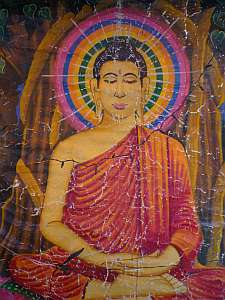 |
Buddhism is always in the background of Khmer culture, and for occasions like funerals and weddings it moves more to the foreground. This well-used image of Buddha, together with the fairy lights strung around it, has traveled to many villages where Buddha has gazed serenely over many grieving families. |
|
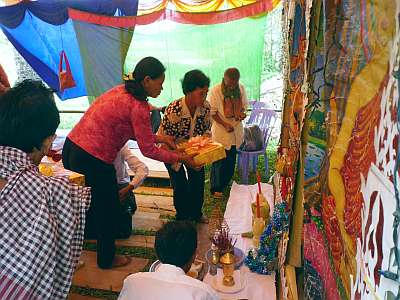 |
The monks are invited to every significant function in Cambodian life and culture and are accorded great respect. Here two of the neighbor helpers puts gifts for the monks near the Buddha image, to be offered at the end of the ceremony. |
|
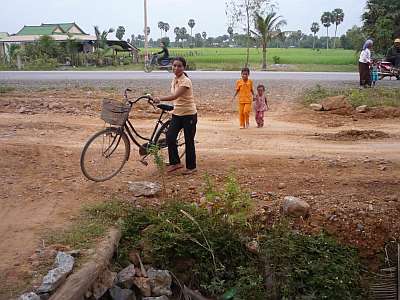 |
A blaring loudspeaker system, running wide-open for two full days, announces the death of Sary to the world within earshot, making up for the lack of obituaries in newspapers. And then the friends and neighbors start coming. This mother pushes her bicycle across the ditch after her two small daughters dismounted from the rear where they were riding. |
|
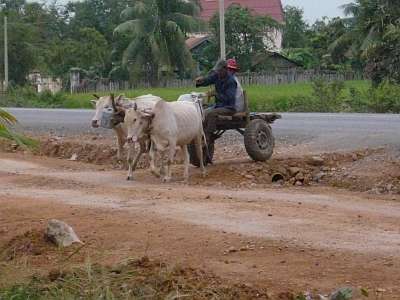 |
These people arrived by ox cart. There are fairly strict social norms requiring people to come, not only to show support and solidarity, but also to help share the financial burden of a funeral in a family that is quite poor. |
|
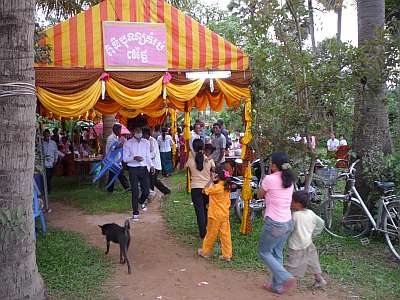 |
These tents are ubiquitous in Cambodia, set up in yards and fields in the rural areas for the celebrations of weddings and funerals, and set up in the streets in the cities, totally blocking traffic. Most Cambodian people are from the provinces and just carry into town the same customs they practiced in open fields without regard to the turmoil and chaos some of the traditions cause in the city. |
|
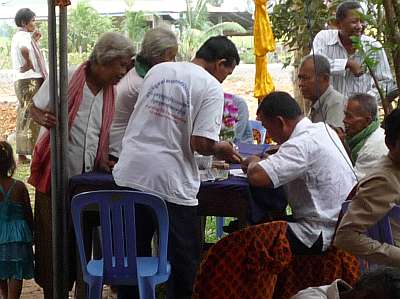 |
Everyone who receives an invitation and attends the ceremony is expected to make a donation to help pay for the funeral. The names and amounts are recorded in a book kept at this table where relatives collect the money. These families are dirt poor and cannot afford a ceremony like this so the culture has evolved a rolling system of ceremonies: you come and pay for this ceremony, and then when your father dies or your son gets married, we go to your ceremony and give a donation. |
|
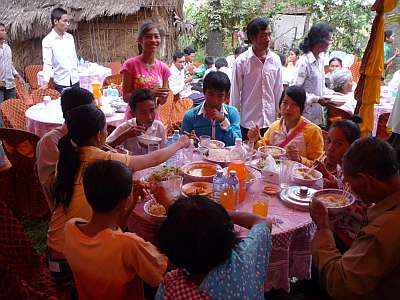 |
The deaf students from the DDP classroom in Kampot rode their bicycles the six or seven miles to the house outside of town to participate because they knew Sary. Some of these students had studied with him before he entered the job training program. |
|
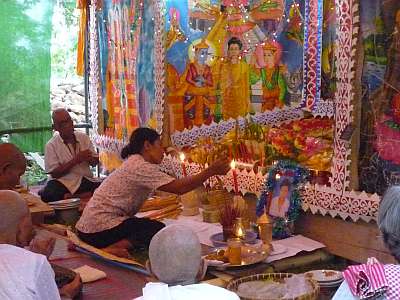 |
Finally the candles are lit for the beginning of the ceremony. We were told the ceremony would begin about 7:00 PM but the first monks arrived at 5:30 and the service actually began about 6:15 PM. In a land where travel is difficult and there is no public transportation, schedules are quite flexible. Things happen when they happen. |
|
 |
Five monks were invited to the ceremony, maybe more than a poor family can afford, but maybe a show of their very real grief and the desire to give their 21-year old son the best send-off possible. The monks chant in Pali, an ancient langauge which most people do not understand, somewhat akin to the use of Latin in the Catholic Church in years gone by. The older women in the foreground made up most of those responding. The younger people stayed at the tables and continued eating, but at least they turned off the blaring music during the service. |
|
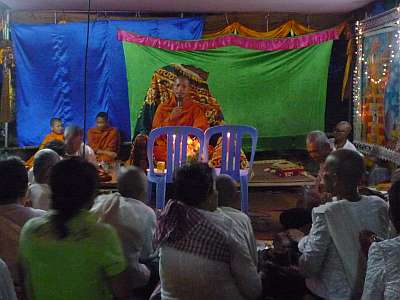 |
After all the monks--seated in order of seniority--finished chanting, the head monk sat on a special chair and offered advice to the people on how to accept loss and sorrow according to the teachings of Buddha and continue on with life. |
|









